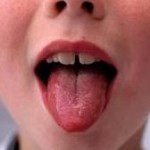What is Scarlet Fever in Children?
 Scarlet fever is caused by an extoxin bacterium. Being caused by bacterial infection, antibiotics are quite effective for its treatment. When antibiotics were not developed this used to be a major cause of death worldwide.
Scarlet fever is caused by an extoxin bacterium. Being caused by bacterial infection, antibiotics are quite effective for its treatment. When antibiotics were not developed this used to be a major cause of death worldwide.
The signs and symptoms of scarlet fever are:
- Sore throat.
- Fever
- The tongue of the patient turns bright red and gives strawberry appearance.
- The patient develops rash which is red in color and rough in texture. This appears within 12 to 48 hours of fever. The characteristic of this rash is that it spares the face and is concentrated on chest, armpits and behind the ears, i.e. it is worst at the places where the skin folds.
The rash starts to fade or peel off in three or four days of the day it appeared.
To diagnose the existence of scarlet fever, the main test which is ordered by the doctor is blood test. Blood tests include ESR test and CRP test. Blood culture is generally not positive. A person suffering from scarlet fever is likely to develop septic complications due to streptococcus in blood. The septic complications, though very rare these days, results in infection in ears and sinus. The complications of scarlet fever to the immune system of the patient results is rheumatic fever, renewed fever, and renewed angina, septic of ears, nose and throat, some patients may also develop kidney infection.
The most striking feature of the scarlet fever is the rash that appears on the body. When it starts to appear it looks like sunburns with tiny bumps and is accompanied with itching. It leaves the mouth unaffected and spreads to chest and back. The rash forms classic red streaks on the dark areas of the skin which eventually turn white. The rash fades fully in about six days. The throat of the patient also turns red and sore. Fever is at or above 101 0 F. In some cases the fever may be low but other symptoms will indicate existence of scarlet fever. The tonsils and back of the tongue also look covered with coating of white mucus or may be covered with white or yellow specks of pus. The infected person also suffers from loss of appetite, chill, body ache, nausea and vomiting.
Though in the initial stages the patient may be infectious and may transmit the disease to the others attending upon him, but after he has been administered dose of antibiotic for 24 hours the patient no longer remain infectious. Children above the age of three need to be carefully watched for infection of throat. In case the throat culture is positive immediate treatment should be started and antibiotics administered as per the prescription of the attending doctor.